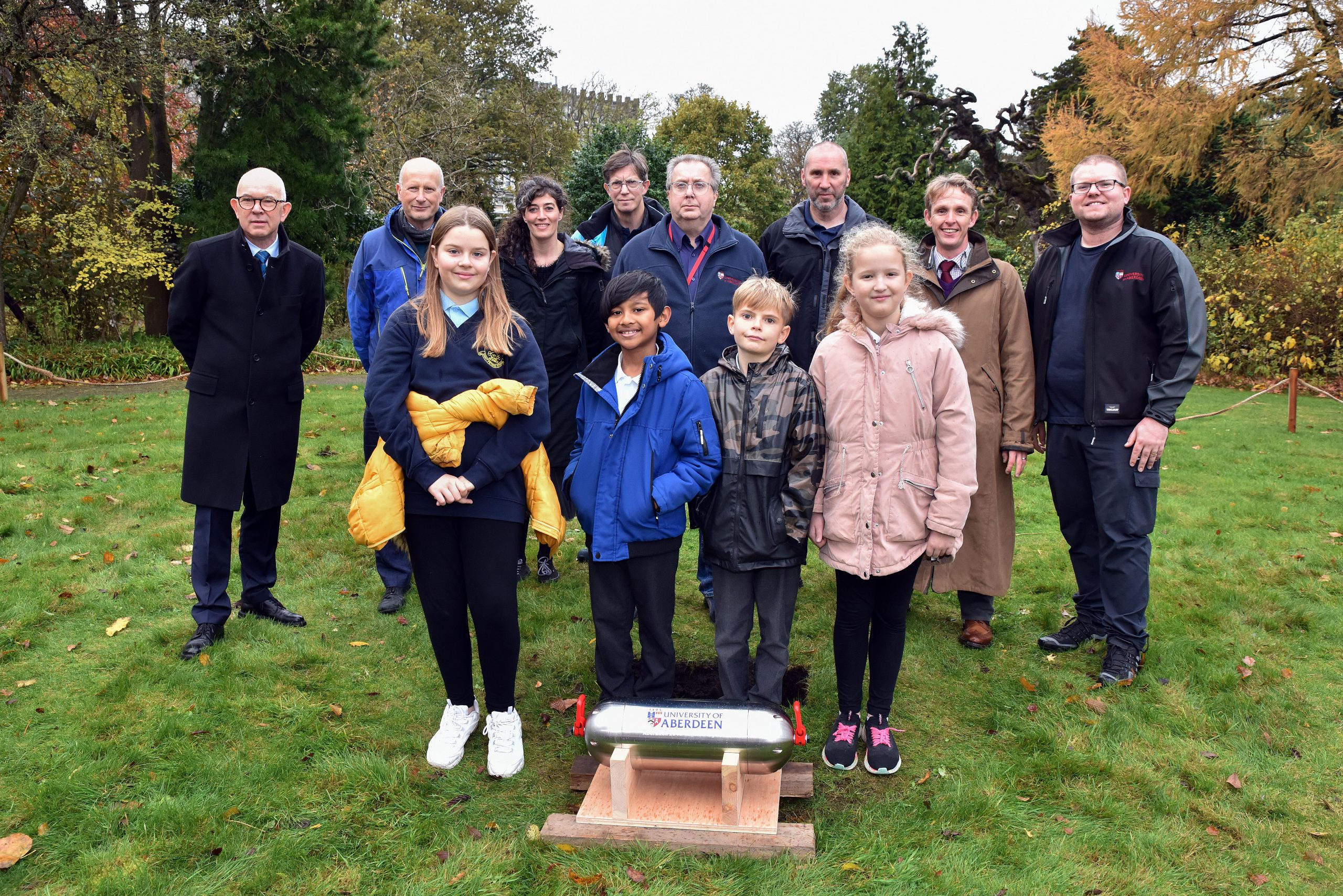A SCOTTISH university has buried messages of hope and pledges for the future, not to be read until 2040.
Sealed in a stainless steel capsule, made by Aberdeen University’s School of Engineering, the content includes words from students and staff, including Principal and Vice Chancellor George Boyne.

Marking the final day of COP26, the time capsule was buried in the Cruickshank Botanic Garden, in a ceremony attended by staff, students and pupils from St Peter’s Primary School.
Pieces of artwork created by pupils of the primary school and Bucksburn Academy were also included, designed in response to the question: how would you like the planet to be in 2040?
The container will be reopened in 2040, on February 10, to coincide with Aberdeen University’s 545th birthday.
Vials of soil, air and water from the North Sea were also sealed within the capsule.
In parallel, a climate capsule, hosted on the university’s servers and containing more messages and pledges on climate change from staff, students and alumni, will be opened on the same anniversary.
University Principal and Vice Chancellor George Boyne said: “Through our Aberdeen 2040 strategy, the University has an institutional commitment to show leadership in working for the sustainable future of our planet, including a commitment to achieve net zero carbon emissions before 2040.”
He added that the university is continuing to work towards the UN Sustainable Development Goals and has been recognised within the Times Higher Education Impact Rankings for its positive influence on society.
The idea to plant a capsule came from Dr Ana Payo-Payo, Research Fellow at the School of Biological Sciences, who specialises in the impacts of climate change on ecology and conservation biology.
Professor David Burslem, also from the School of Biological Sciences, helped to organise the initiative.
He said: “Young people are the key to driving change that will protect our planet for future generations, and it has been heartening to see so many of them active and engaged in COP26, including many of our own students who have attended the event as observers, facilitated by the University.
“Our climate capsule has provided another opportunity for young people, including local schoolchildren and our next generation of academic researchers, to voice their hopes for the future.
“It’s my sincere wish that these hopes are realised when the capsule is opened in 2040.”
Highlighting the importance of environmental management in the face of climate change, Mark Paterson, Curator of the Cruickshank Botanic Garden, said: “It is vital to maintain native and global flora and promote the careful management of ecosystem services, and a botanic garden can be an exemplar – at a local scale – of such practices.
“It’s very appropriate the capsule should be located within our beautiful and peaceful eleven acre garden, which promotes an appreciation of the beauty, diversity and importance of plants, and an understanding of their roles in the natural world.”